I often complain that the little Basque beach resort where we live is photographically boring. You can see everything there is to see in a few days, it’s invariably a little too glossy, a little too beautiful, a little too touristy and the people who live here are a tad too well off. It’s a bit like only ever being allowed to eat cake and nothing else. In theory it sounds great, but you can imagine that in practice you’ll get sick of it rather quickly. Well, in June 2016 finally something more interesting happened. On one of my usual meanderings through the city centre I noticed that a crowd was gathering. There were banners and signs, and it looked like things might get rather interesting indeed. Some press photographers were hanging around too, so I decided to stick around to see what would happen.
As so often I had no way of figuring out what was going on without revealing that I’m an outsider. At local political events usually only Basque is spoken, the banners are in Basque and if you’ve ever heard Basque you’ll know that it’s not an easy language to learn or figure out from context. It was again one of those times when I could only take pictures first and ask questions later. Personally I don’t mind a bit of mystery while photographing events, since it turns it into a purely visual experience. It makes it difficult to predict what is going to happen next though.
Pictures taken with: Leica M6, Voigtländer Nokton 50mm f/1.1 and Zeiss C-Biogon 35mm f/2.8. Rolleicord V, Schneider-Kreuznach Xenar 75mm f/3.5. Rollei Retro 80s and Ilford HP5+.
|
From the banners, my first guess was that this protest had something to do with the environment, but things were a little too tense for a general environmental issue. This was something concrete and local. There were enough young people there to guess even without the banner that there was an Occupy aspect to the protest. The amount of press there also suggested that the police probably wasn’t far off either, although none were near at this point. |
Everyone was just waiting around and there were a number of kids there too. Not too many though.
The banner said things would start to happen at 6.30pm.
They were right on time.
The protesters were moving towards the square in front of the seat of the autonomous government of the region. For anyone unfamiliar with recent Spanish law I might add that it’s usually a bad and very expensive idea to protest in front of government buildings.
Unsurprisingly the protesters were stopped by the police and they decided to make it a sitting protest about 200m away from their intended target.
The signs they are holding up speak out against contamination, this time in Spanish.
Things didn’t stay quiet long. The protesters were completely peaceful, but riot police in Spain isn’t known for their soft touch. Peaceful protesters sitting on the ground were attacked with police batons and arrested for shouting about injustice. Since I wasn’t expecting to photograph a protest and couldn’t figure out what the plan was I actually ran out of film before any of the nasty stuff happened. Besides, even if I had any pictures of police violence it would get rather expensive to post them here. Just look at the handle of the baton of the police officer on the right and you can imagine the rest. I went home rather angry and quickly found out what this was all about: It was a protest against a garbage incinerator that they were planning to build on the outskirts of the city. The project had been stalled for 5 years and there had been a new motion to investigate possible health risks to stall it further. The protest happened to add more urgency to this motion and people were camping out in Occupy fashion at the Boulevard. What I had run into by accident was an attempt to move the camp to the square in front of the government building itself. Although unsuccessful on the day when I was present, the protesters succeeded a day later. I walked past the camp during one of their meetings and someone translated to Spanish for me. Apparently a big event was planned for the weekend and I decided to bring plenty of film to that one.
The square in front of the government building is green and perfect for a camp.
Children and dogs were also in the camp, so things were bound to be a bit more quiet this time.
Lots of young people camping out.
Communal eating.
There was some Basque dancing.
And less Basque dancing.
A couple of locals who came by for the event. As they told me they weren’t actually camping out, but decided to come for the big event to show support.
I wasn’t the only photographer there, but definitely the only one with a good old-fashioned Rolleicord. It was fun to run with the press photographers for a few days and one of them even helped me get some more film when I ran out at another event.
At this point it could still have been any other local traditional event with dancing and music. Everyone was speaking Basque and I was as always just waiting around to see what would happen next. Local events often have me confused and unable to predict the outcome of the situation, since Basque is so incomprehensible. I even had situations where I never figured what an event was about because I couldn’t find it in any Spanish speaking sources. The language on the street in the city is Spanish by the way, but Basque is spoken in the surrounding countryside and at all the local events. In this case I was quite sure that more interesting stuff would happen soon though since there were preparations happening.
Someone changed the name of the local newspaper and tacked it as a sticker on this puppy. The sticker stayed there roughly 3 seconds before the pup chewed it off. And I don’t need to know Basque to understand this one.
Not only young people supporting the cause!
And then it started. All Basque events involve drumming, even the protests. It’s simply part of the tradition.
The protest ceased to be only about the garbage incinerator and expanded into much bigger concerns, as the refugees welcome sign shows. A sign in Spanish says “Violence is to charge 600€”. I can only guess that this is how much they fined arrested protesters.
This time the protesters were more clever and put the children at the front of the protest. With press all over the place the police kept their distance.
The march went through the entire city centre and they had quite a good turnout.
Apart from the regular march they also thought of interesting visual details that would attract people’s attention.
Very convincing capitalist, don’t you think?
Google translate tells me this means something like: “People without houses, houses without people, what nonsense”.
They also put posters up with more messages.
Quite a turnout!
It was a peaceful protest and for once the police kept their distance. Not soon afterwards the police cleared the square in front of the government building though and the protesters were forced to move back to the Boulevard. I kept an eye on their activities and came back for another protest that same week. During their assemblies usually someone was kind enough to translate into Spanish so I got a better notion of what was going on. Quite a number of protesters had apparently been arrested and were facing huge fines, in the assemblies the protesters organised their activities which included free legal support for the arrested protesters, planning more events and so on.
Just before one of those meetings a couple of friends are catching up.
These meetings were a democratic affair and any type of protest action was decided by vote. This one was a clear yes. The plan was another protest at the government building, but this time in a different fashion.
In front of the government building the police was present.
The central seat of a local coop bank is one block away from the government building and this time they stopped there. The slogan they shouted was “Less police, more justice”, but I guess the bank also had something to do with the construction of the garbage incinerator
Another assembly after the protest. This time the police had only watched and guarded the perimeter of the government building.
I gathered my knowledge about the protests from friendly people at the meetings translating into Spanish for me, from the press photographers I got to know and from the dispersed information I could find on the internet in Spanish speaking sources. One of the press photographers I spoke to was also not a local and he told me that he was learning Basque to be better able to figure out what was going on at such events. I guess when it’s your job to predict what’s going to happen next and take pictures of it, learning the language makes total sense. I can keep my sense of mystery though since nobody pays me for taking such pictures. And instead of downloading my pictures from my digital camera and sending off my images on the same day like the press guys, I can take my time with the pictures, develop the film, scan the pictures, print some of them in the darkroom and let the story unfold more slowly. I can also decide to wait 3 years to see where the story will go in the long run before showing the pictures.
In May 2017, roughly a year after the protests the construction of the garbage incinerator started in earnest. It is supposed to be in operation by October 2019. After all, since when do protests change anything? And who cares about the wishes or health concerns of the local residents if there is money to be earned?








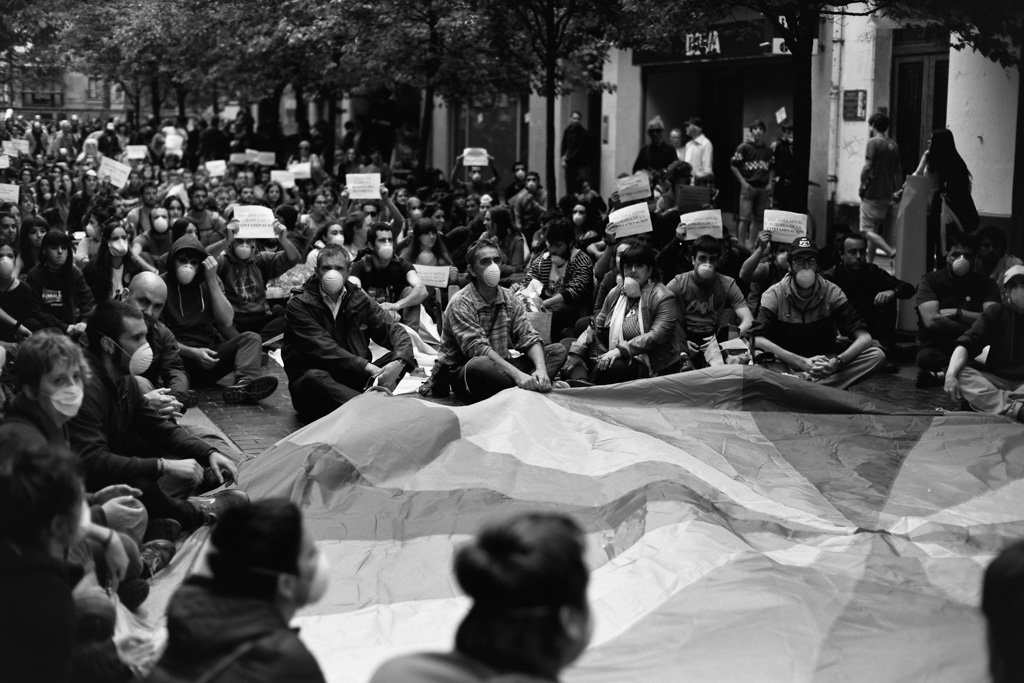






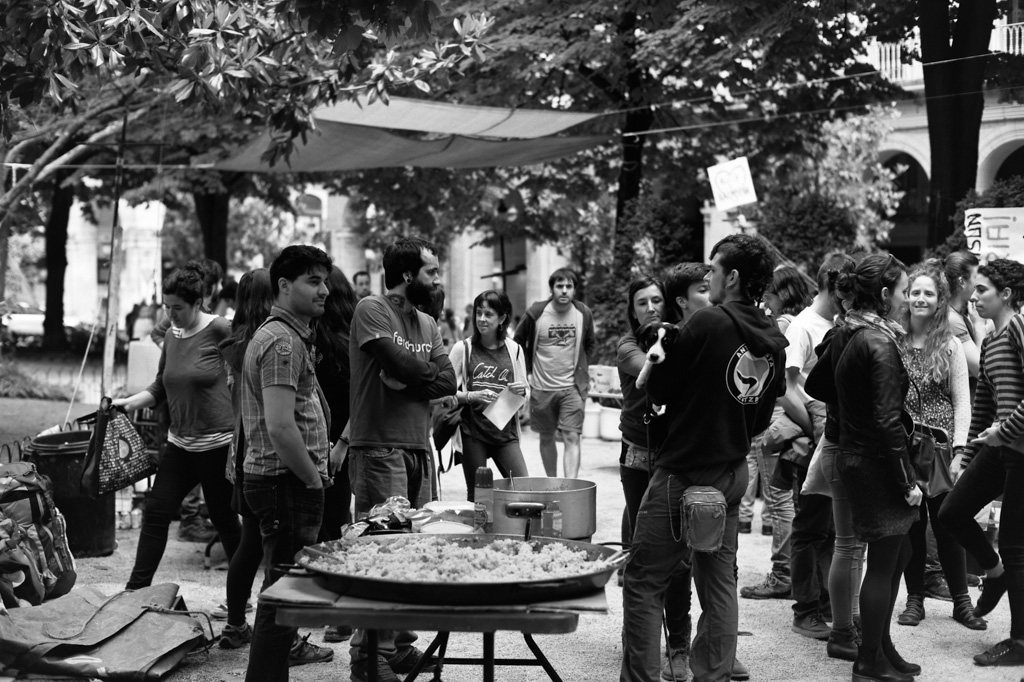




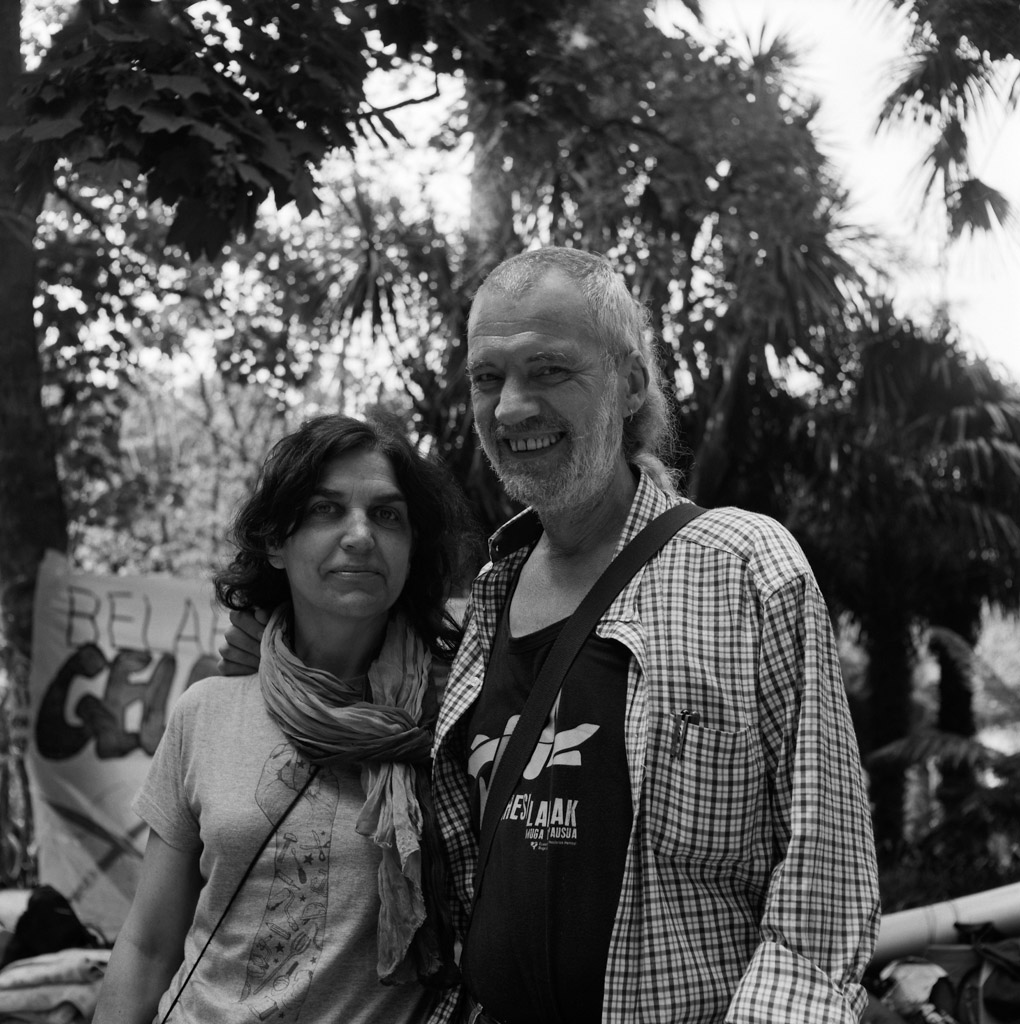

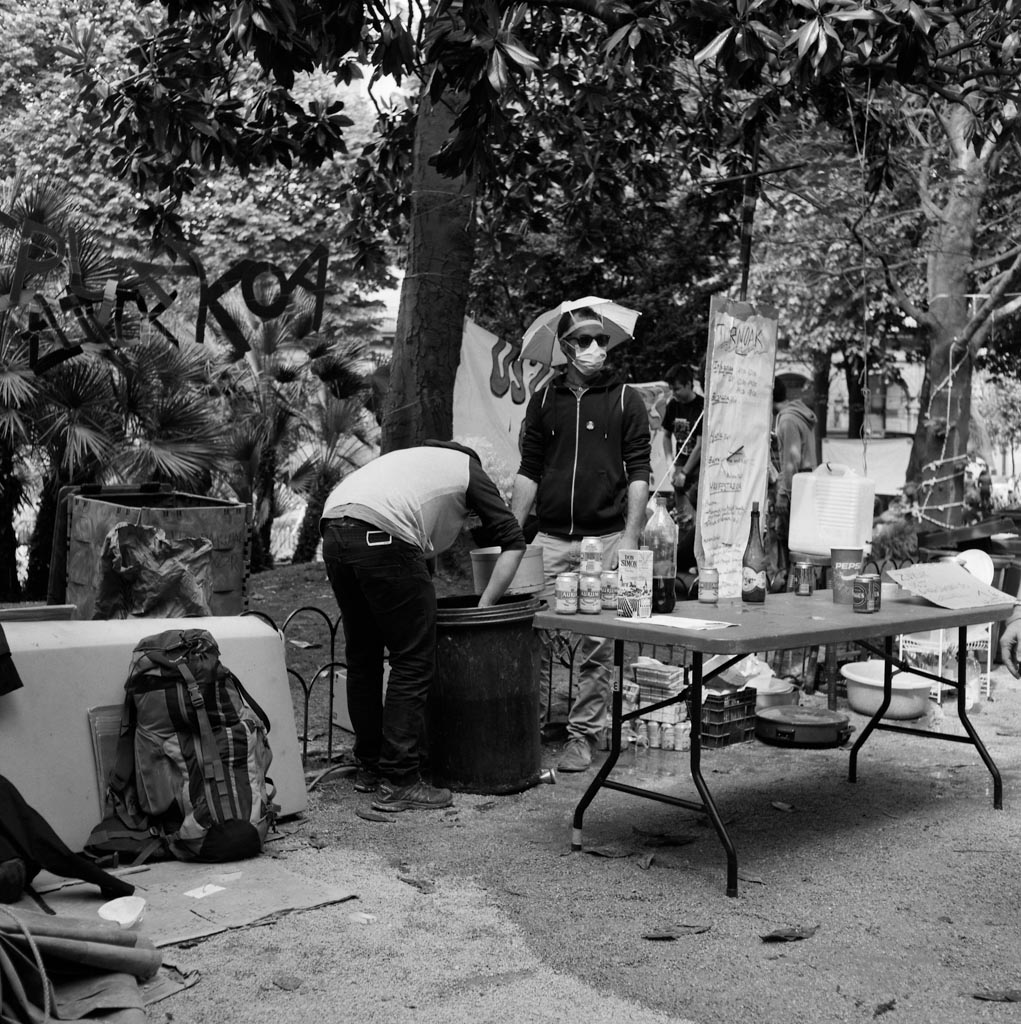














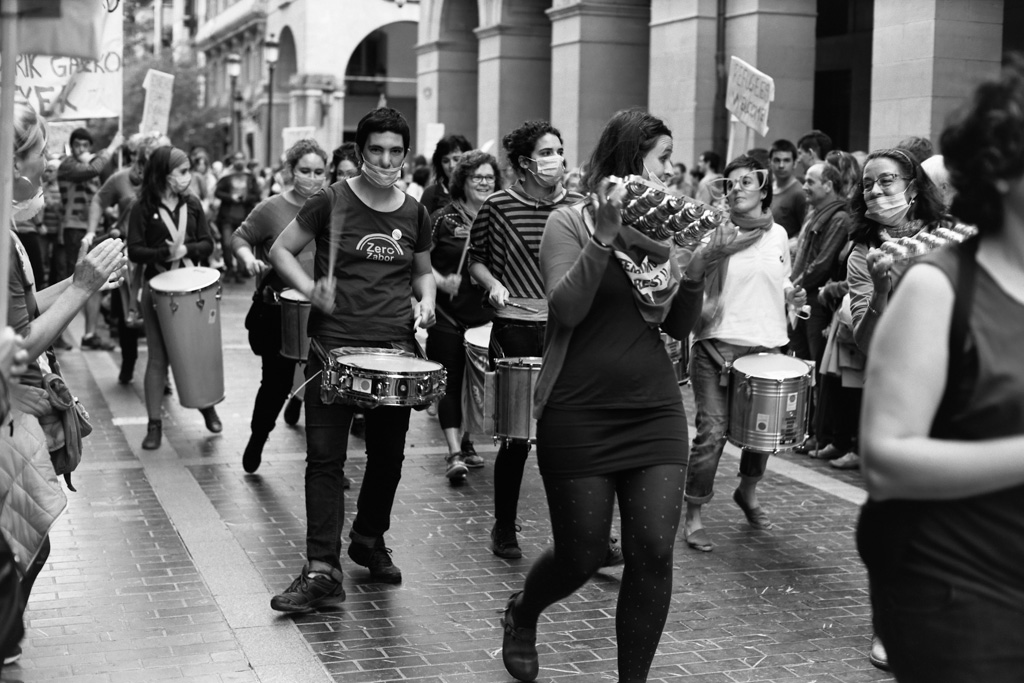


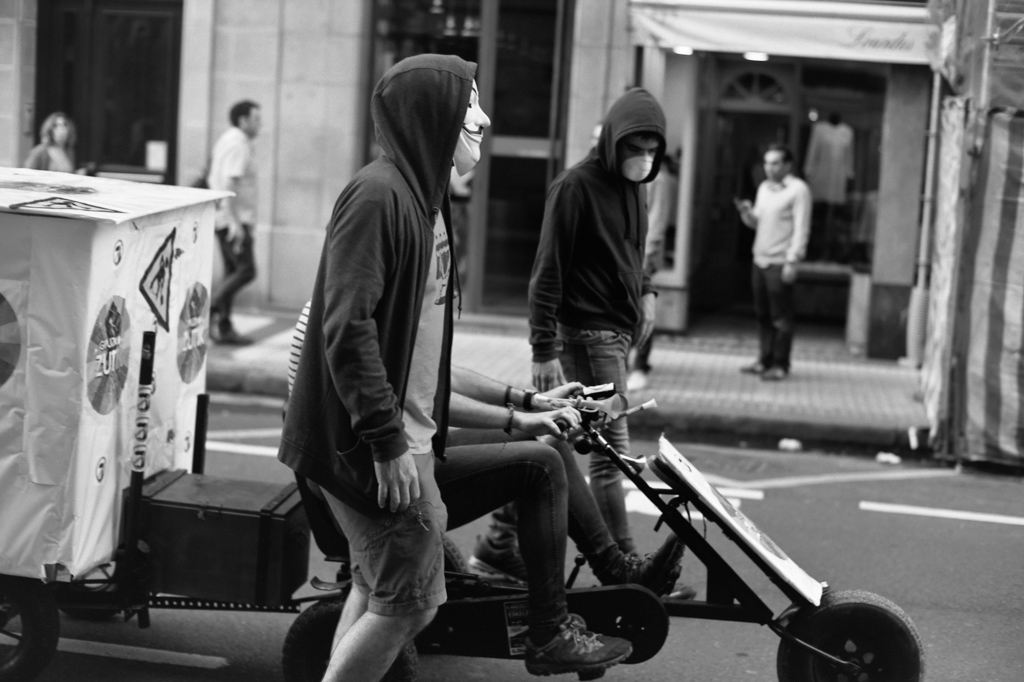
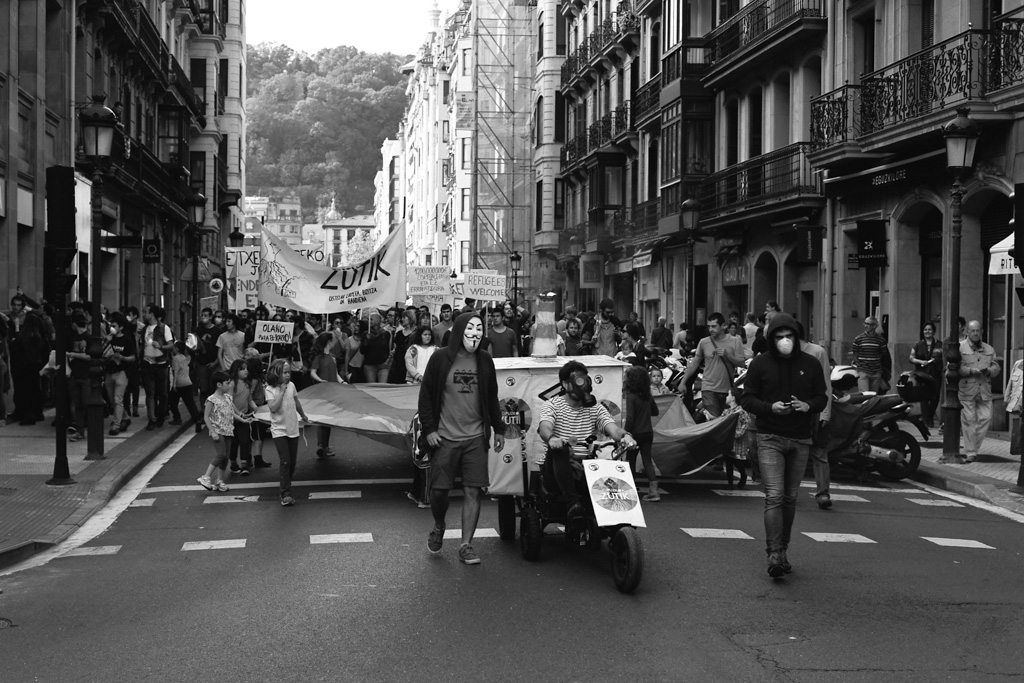






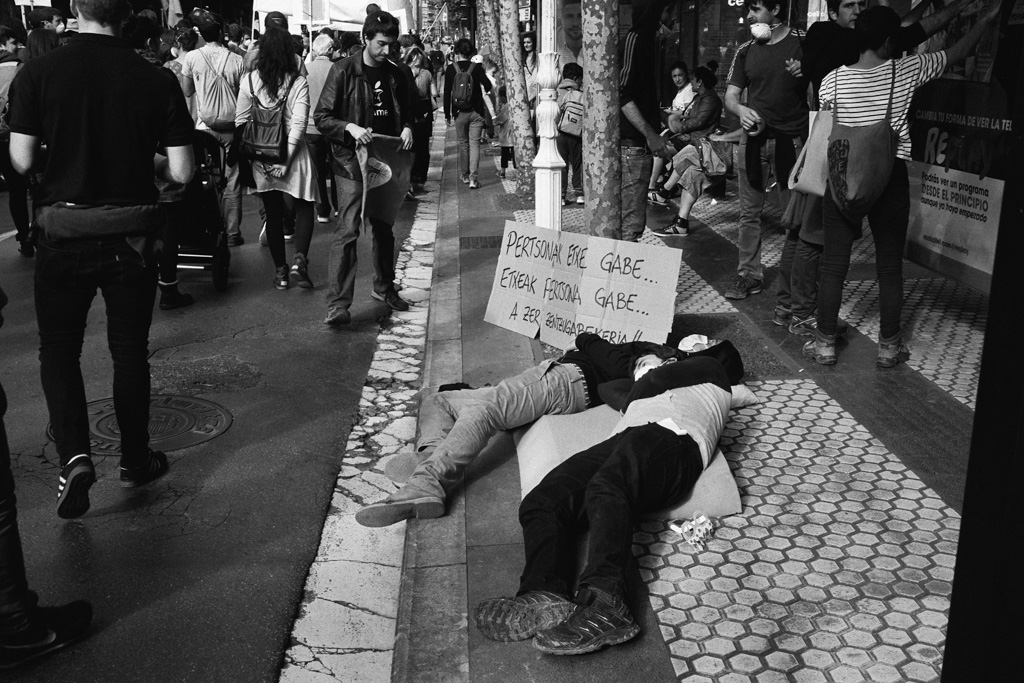

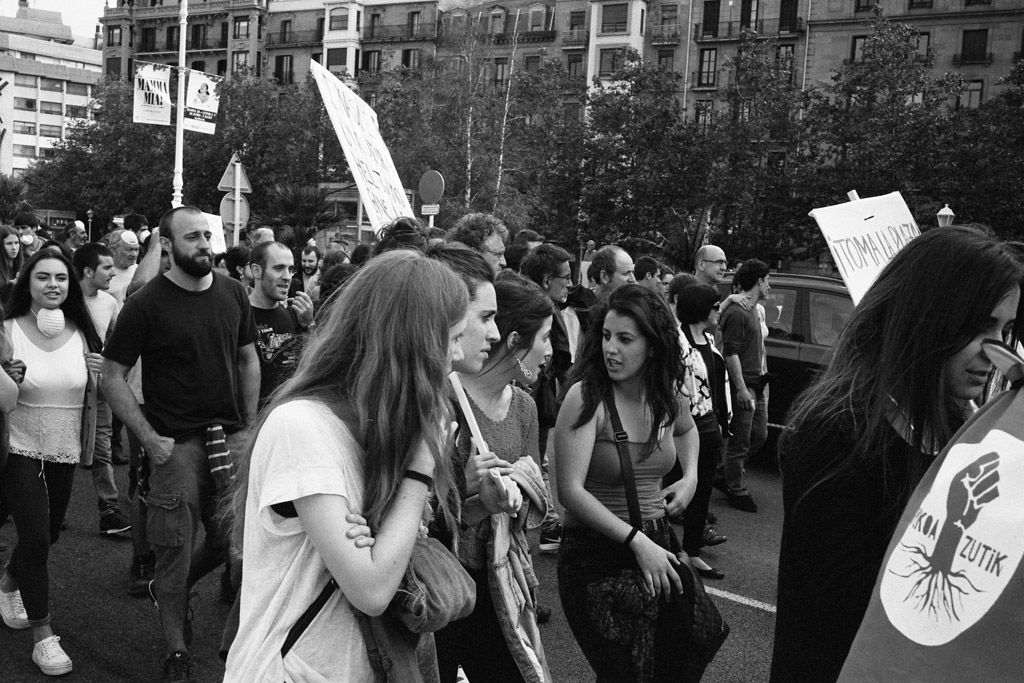


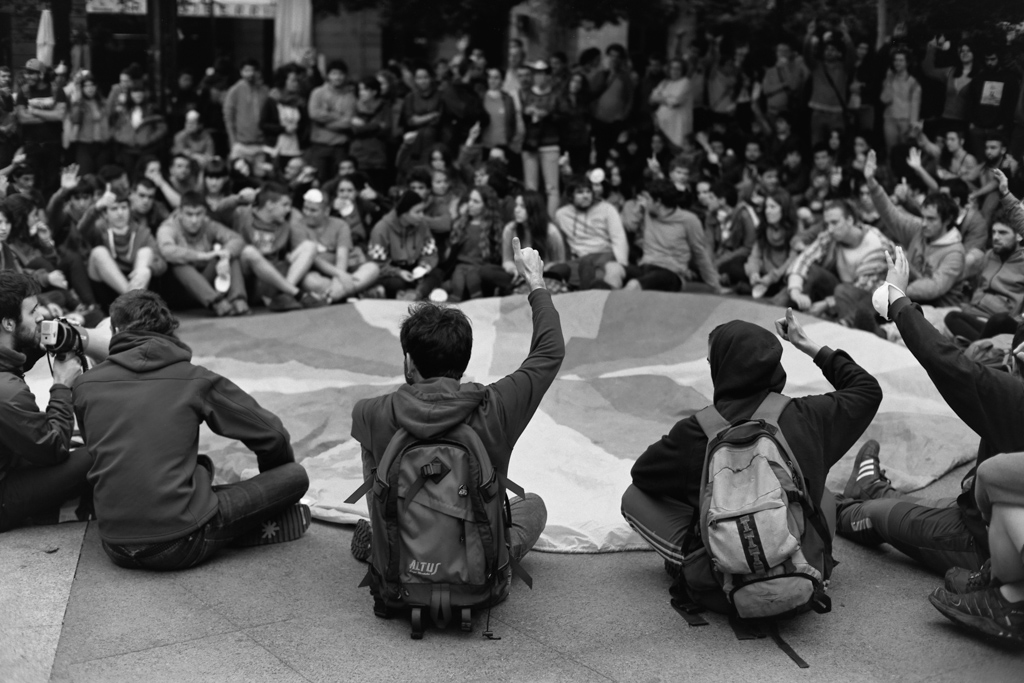








To be honest, your series of pictures shows more of a folk festival than a protest against a waste incinerator. I can understand you well, that you were happy that finally something exciting happened in your little town. Your pictures transmit the happenings very well. Like it 🙂
They do have a weird way of protesting here. It’s generally hard to find any sort of public event without the traditional drums and costumes either. I guess it’s just what they are used to around here. In any case, I’m glad you like the pictures!
Pingback: Protest photography during a general strike | Lilly Schwartz Photography & Art